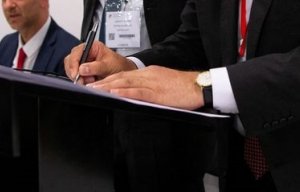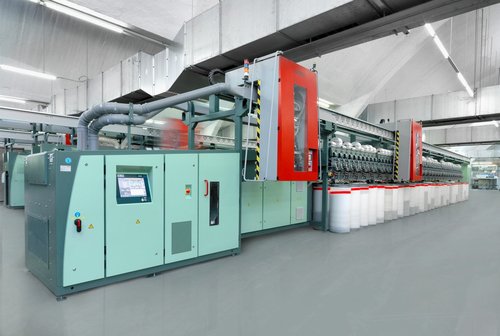
Rieter awarded large contract from Egypt
Developer of spinning systems Rieter has released a new version of its air-jet spinning application for new raw materials and yarn count ranges. Rieter’s air-jet spun yarn Com4 jet, a member of the Com4 yarn family has been under a steady innovation process both in terms of machine design as well as textile technology research, since the launch of the air-jet spinning technology the system some years ago.

11th March 2013
Knitting Industry
|
Winterthur
Developer of spinning systems Rieter has released a new version of its air-jet spinning application for new raw materials and yarn count ranges. Rieter’s air-jet spun yarn Com4 jet, a member of the Com4 yarn family has been under a steady innovation process both in terms of machine design as well as textile technology research, since the launch of the air-jet spinning technology the system some years ago.
Rieter says its system supplier approach has been a prime advantage for customers for years and the Com4 yarns campaign extends this customer support as far as the end product. Any release of a product for new applications has to meet very precise testing standards and the yarn applications not only meet very high operating efficiency levels but their usability is tested in all downstream processes. An application is not offered to Rieter customers unless such a comprehensive test is passed.
“The research efforts and technology experience collected in the last year made it possible for Rieter to include further raw material types and extend the yarn count range where the J 20 air-jet spinning technology can be applied,” Rieter said in a statement last week.
According to the Swiss company, the raw materials listed below have been tested under spinning conditions in customer trial mills and all have been processed to form a particular end product.
Rieter as a producer of all four spinning technologies constantly compares and evaluates different spinning processes and gives recommendations on cost effectiveness of each of them. The company plans to pursue this trend in development further.
The J 20 air-jet spinning machine is now available for the following application range:
Air-jet spun yarns are said to have excellent pilling behaviour due to the fibre ends being well embedded in the yarn structure and circular knitted fabrics are said to have minimum skew due to the almost non-existent yarn-torsion.
As fibre fly is minimized using the technology, the frequency of machine cleaning can be reduced and fibre fly knitted into the fabric is largely avoided. Air-jet yarns are also said to contain considerably fewer yarn connections, a positive yarn characteristic which is said to improve productivity in further processing.
Rieter is a leading supplier for textile machinery and components used in short staple fibre spinning. Based in Winterthur (Switzerland), the company develops and manufactures systems, machinery and technology components used to convert natural and manmade fibres and their blends into yarns. With 19 manufacturing locations in 9 countries, the company employs a global workforce of around 4 700, about 28 % of whom are based in Switzerland.

Business intelligence for the fibre, textiles and apparel industries: technologies, innovations, markets, investments, trade policy, sourcing, strategy...
Find out more